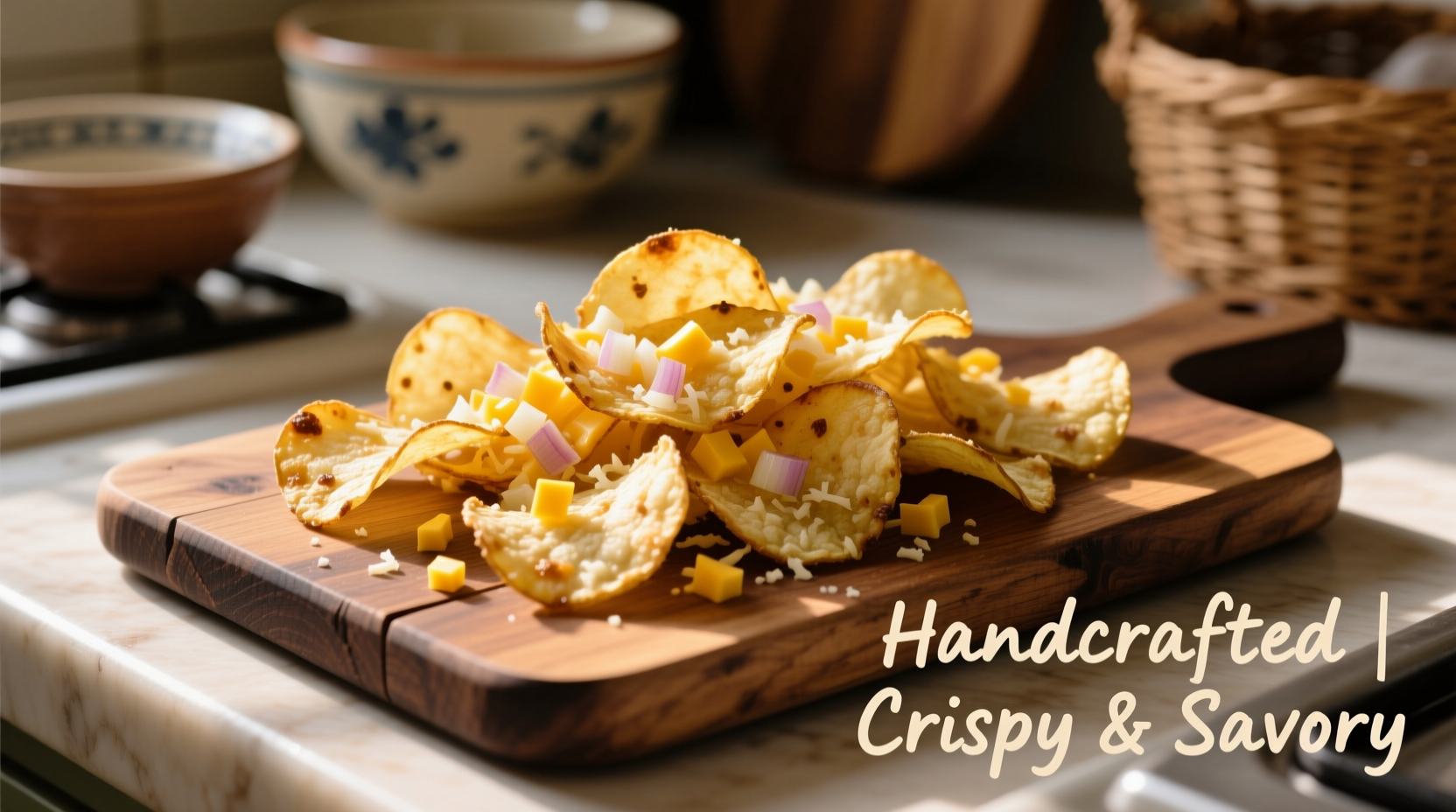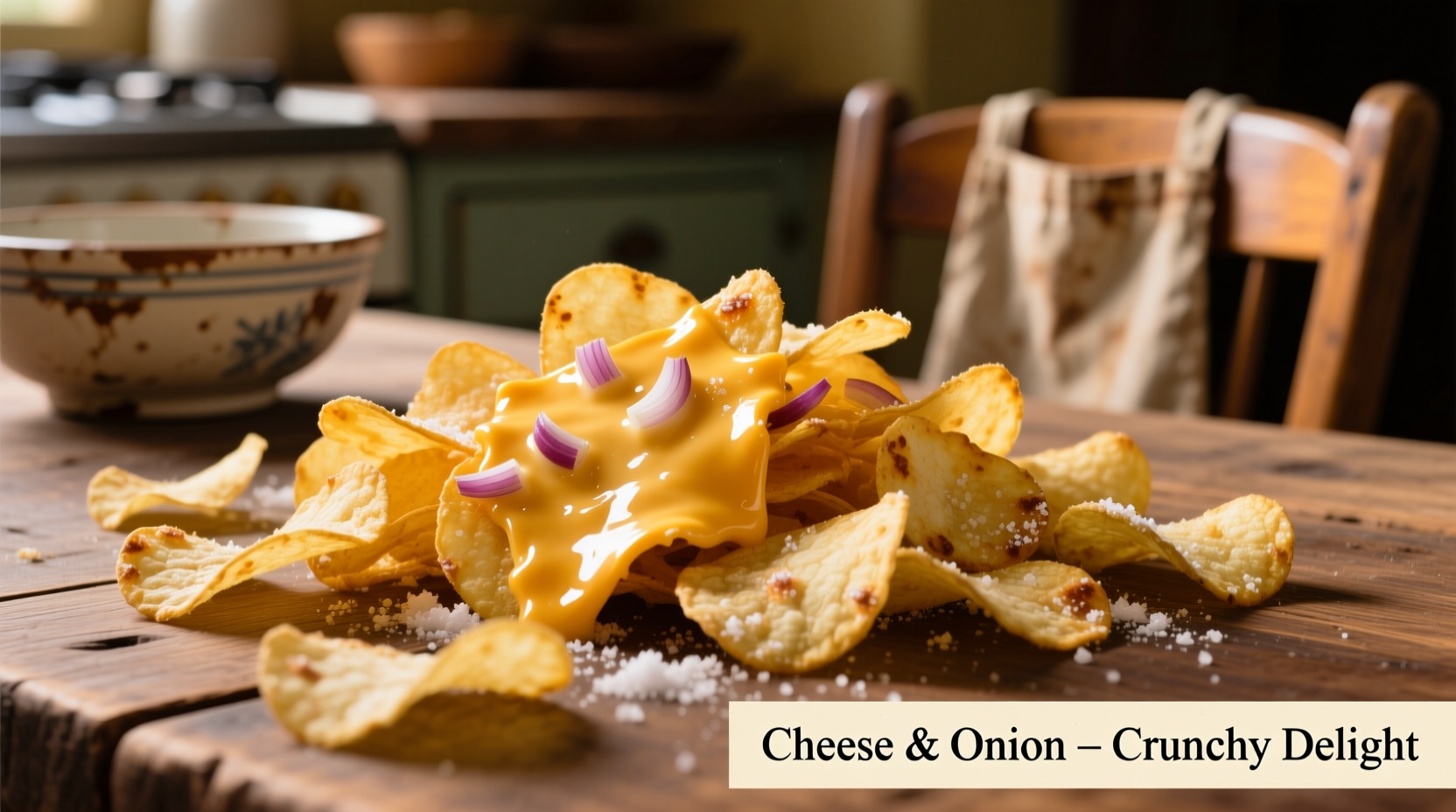The Surprising History Behind Your Favorite Snack
While potato chips date back to 1853, the cheese and onion flavor revolution began unexpectedly in 1960s Britain. Irish company Tayto, founded by Joe 'Spud' Murphy, pioneered the world's first seasoned crisps when Murphy accidentally added cheese powder to a batch of plain chips. This happy accident launched a flavor phenomenon that would spread globally within two decades.
Flavor Evolution Timeline
- 1962: Tayto introduces the world's first cheese and onion flavored crisps in Ireland
- 1970s: Walkers (now PepsiCo) popularizes the flavor across the UK with their distinctive blue packet
- 1985: First US market introduction by Wise Foods, though initial reception was lukewarm
- 2000s: Global expansion sees regional adaptations in Australia, Canada, and parts of Asia
- 2018: Market research shows cheese and onion surpassing salt and vinegar as Britain's second favorite flavor
What's Really in That Blue Packet? Flavor Science Explained
The distinctive cheese and onion taste doesn't come from actual cheese and fresh onions. Modern formulations rely on a precise blend of flavor compounds that mimic these ingredients through food science. The primary components include:
- Dehydrated onion powder (5-8% of seasoning blend)
- Monosodium glutamate (MSG) for umami enhancement
- Maltodextrin as a flavor carrier
- Cheddar cheese powder (typically 2-5% in premium brands)
- Disodium inosinate and guanylate for flavor amplification
- Natural and artificial flavors creating the characteristic profile
Food scientists at institutions like the Institute of Food Technologists have documented how these compounds interact with our taste receptors to create the perception of cheese and onion, despite containing minimal actual dairy or fresh produce. The precise balance varies significantly between regions—British versions tend toward stronger onion notes while Australian formulations emphasize sharper cheese flavors.
| Flavor Component | UK Standard | Australian Standard | North American Standard |
|---|---|---|---|
| Onion intensity | High | Medium | Low |
| Cheese profile | Sharp cheddar | Vintage cheddar | Mild American |
| Salt content (per 30g) | 0.45g | 0.52g | 0.38g |
| Acid regulator level | Moderate | High | Low |
Nutritional Reality Check: What You're Actually Consuming
According to USDA FoodData Central records, a standard 30g serving of cheese and onion potato chips contains approximately:
- 150-160 calories
- 10g fat (1.5g saturated)
- 14g carbohydrates
- 1-2g protein
- 200-250mg sodium (8-10% of daily value)
Compared to plain salted chips, cheese and onion varieties typically contain 15-20% more sodium due to flavor enhancers. The U.S. Food and Drug Administration notes that the artificial coloring (typically yellow #5 and #6) used in many formulations has been subject to ongoing safety reviews, though current evidence supports moderate consumption.

Why This Flavor Dominates Global Markets
Market research from Statista reveals cheese and onion consistently ranks as the second most popular chip flavor in the UK, Australia, and Ireland, capturing 22-28% of the flavored chip market. Consumer surveys show distinct regional preferences:
- UK consumers prefer stronger onion notes with tangy cheese undertones
- Australian palates favor a sharper, more mature cheddar profile
- Canadian markets show preference for milder cheese with subtle onion
- US consumers generally prefer less intense versions than Commonwealth countries
This flavor's enduring popularity stems from its perfect balance of savory (umami) and sweet (from caramelized onions), creating what food scientists call a "flavor layering" effect that keeps consumers reaching for more. The Journal of Food Science published research showing the specific combination triggers multiple taste receptors simultaneously, enhancing perceived flavor complexity.
Recreate the Magic: Homemade Cheese and Onion Chips
For those seeking a more natural version without artificial flavors, this simple recipe delivers authentic-tasting results:
- Thinly slice 4 large russet potatoes using a mandoline (1/16 inch thick)
- Soak slices in cold water for 30 minutes, then pat completely dry
- Toss with 2 tbsp olive oil, 1 tsp onion powder, and 1/2 tsp garlic powder
- Sprinkle with 2 tbsp nutritional yeast (for cheesy flavor) and 1/4 tsp smoked paprika
- Bake at 400°F (200°C) for 15-20 minutes until golden and crisp
- Season with sea salt and additional onion powder while warm
This method avoids the artificial ingredients in commercial versions while delivering similar flavor complexity. For best results, use a high-speed blender to create a fine powder from dehydrated onions rather than pre-made onion powder.
Perfect Pairings: Elevating Your Snack Experience
Cheese and onion chips shine when paired thoughtfully. Based on flavor chemistry principles:
- Ideal beverage pairings: Cold lager beer (the carbonation cuts through fat), unsweetened iced tea (balances saltiness), or sparkling water with lemon
- Culinary applications: Crushed as topping for baked potatoes, mixed into potato salad for texture, or used as breading for chicken cutlets
- Flavor enhancement trick: Sprinkle with fresh chives immediately after opening the bag to boost the onion notes
Food pairing experts at the Culinary Institute of America note that the umami-rich profile makes these chips particularly versatile in recipes where you want to add savory depth without actual cheese.











 浙公网安备
33010002000092号
浙公网安备
33010002000092号 浙B2-20120091-4
浙B2-20120091-4